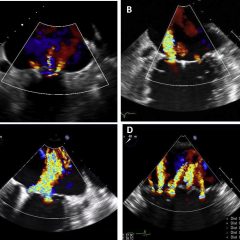April 2019
Guidelines for the Evaluation of Valvular Regurgitation After Percutaneous Valve Repair or Replacement
Guidelines for the Evaluation of Valvular Regurgitation After Percutaneous Valve Repair or Replacement

Valvular disease remains a major cause of cardiovascular morbidity and mortality worldwide. Over the past decade, catheter-based interventions in valvular disease have evolved from balloon dilation of native stenotic valves to repair of paravalvular regurgitation (PVR) with vascular plugs and more recently to valve replacement and repair. Currently-approved interventions include transcatheter aortic valve replacement (TAVR), pulmonic valve replacement, and mitral valve repair, targeted to specific populations. Rapid technological advancements in device design are likely to improve acute and long-term results and expand current indications.
Chair(s)
- Zoghbi, William A.
Translated PDFs
Products
- RVR After Percutaneous Valve Repair or Replacement Poster
- Residual Valvular Regurgitation After Percutaneous Valve Repair or Replacement Flip Chart Poster
- Residual Valvular Regurgitation After Percutaneous Valve Repair or Replacement (Insert)
- Residual Valvular Regurgitation After Percutaneous Valve Repair or Replacement Pocket Guide
